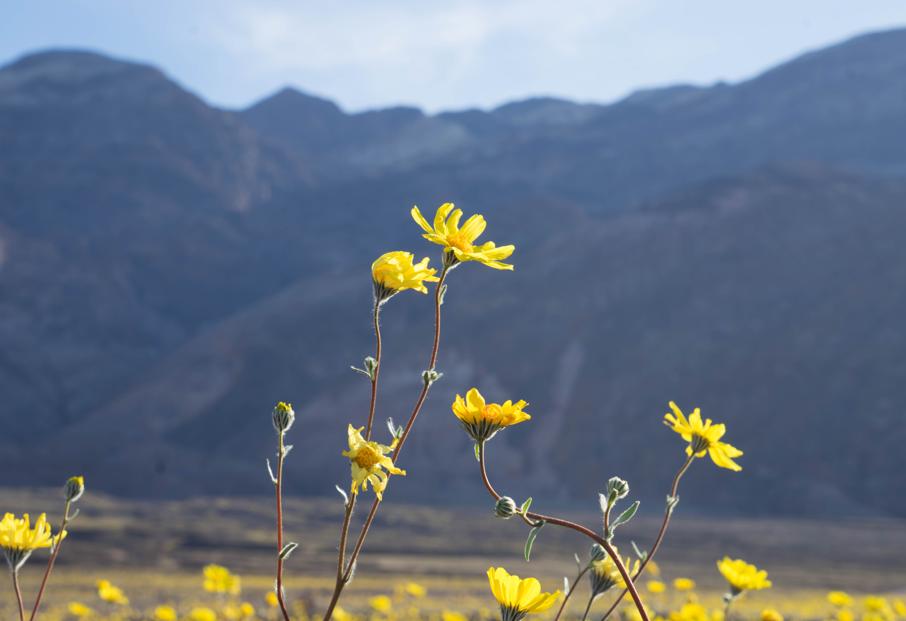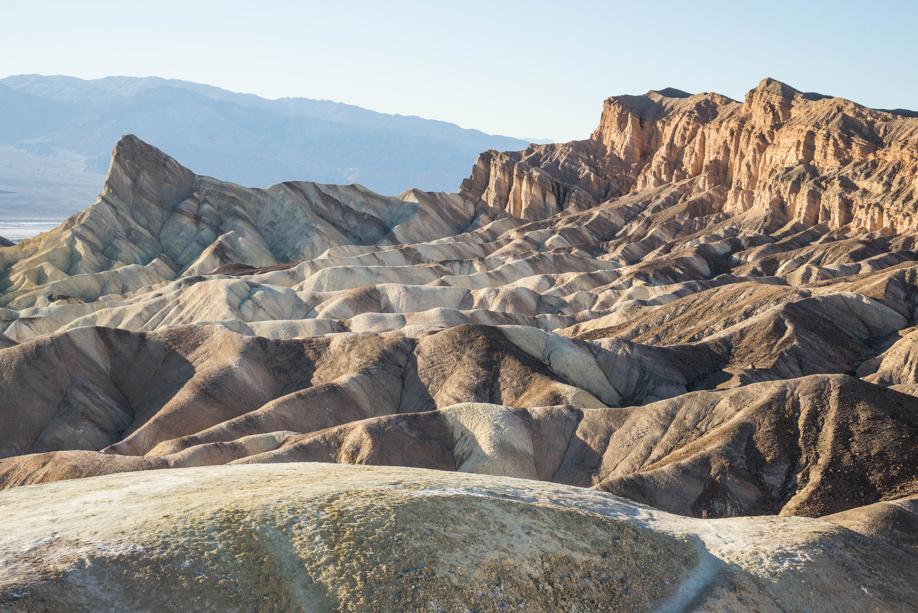


TECOPA, Calif. — I happen to be based in Los Angeles for a while, working in the city during the week but getting out on the weekends to enjoy the natural beauty that California has to offer in its dramatically diverse forms. One thing I have wanted is to bathe in a natural hot spring. I searched online and bought a book called “Touring Hot Springs in California and Nevada,’’ by Matt Bischoff, which brought me to a little town in the Mojave Desert called Tecopa.
An Easterner arriving in Tecopa in February might wonder at what seems to be snow on the ground, but the white covering in this sandy place is actually evaporated alkaline salts leached from the soil. Tecopa sits over a vast aquifer fed from the Amaragosa River to the north and that extends into the nearby Death Valley, which sits over one of the largest aquifers in the world. The underground connections extend much farther: I was told by the owner of the Tecopa Hot Springs Resort, Amy Noel, that when Mount St. Helens erupted in 1980, the hot water springs that feed the baths at her motel and campground stopped flowing for three days. At a cavern pool called Devil’s Hole in the Ash Meadows Wildlife Preserve, where the endangered pupfish lives in the same water system, waves have sloshed as high as 6 feet following earthquakes in Mexico, Chile, and even Japan.
Tecopa sits on a plateau overlooking a marsh where hot water flows. It seemed strange to plunge a hand into marsh water at more than 90 degrees. The Paiute Indians used to bathe there and apply the mineralized muds to their skin. People do the same today in these marsh pools. At the Tecopa Hot Springs Resort, the rooms in the small hotel are adjacent to tubs with water at 105 degrees, pumped from an artesian well. Up on a hill sits a bathhouse for the campers and people who live here in the winter months. Most everyone clears out by summer, when the temperature averages nearly 120 degrees, then the water in the hot tubs is cooler than the air outside.
I very much enjoyed my first overnight stay at the resort, where I soaked in the water and ate at the Bistro restaurant. I made a couple of trips to Death Valley, stopping at the Zabriskie Point outlook, with its many striated sand hills and volcanic layers, and I hiked though the Golden Canyon down to the valley floor, where the salt flats are more than 200 feet below sea level. I stood in awe of these barren mountains and plains that tell the history of geologic time, when Death Valley was the western coast of what is now North America. Twenty thousand years ago, a lake 600 feet deep filled the valley, fed in part by Lake Tecopa. At Shoreline Butte, one can see strandlines in the rock marking the waterlines of Lake Manly.
After my long hike, I soaked — such a pleasure for a guy like me, who can’t comfortably fit into a normal bathtub. As I was leaving, Noel told me she had just driven to Death Valley to see the wildflower bloom. Because of a flood in October that damaged roads, she couldn’t take the direct, 50-mile route through the town of Shoshone to the blooms, but had to detour north into Death Valley to Furnace Creek, then south along the Badwater Road, a 110-mile trip one way. A strong vein of curiosity rose up from within. I asked, “You drove all that way just to look at flowers?’’ Noel has loved this place since she discovered it four decades ago, which eventually resulted in her buying the Resort in 2000, but still, that was quite a trek. She told me that the October flood brought more than a year’s worth of rain in a single day, that a pulse of water 400 feet wide and 4?feet deep had washed down from Shoshone to Tecopa, that although roads remained impassable and many sites had been damaged, the flood had also brought a super bloom. This happened about once every 10 years, I learned. Seeds accumulate and lay dormant, waiting for the right conditions. I heard later on that the 2005 super bloom brought varieties never before seen by non-indigenous people, a 200-year bloom.
I figured that if Noel had driven all that way, I should, too. Two weeks later, early on a Saturday morning, I rode on a motorcycle from Tecopa through Shoshone and Amaragosa, to Furnace Creek and south along Badwater Road. Soon I came upon the expanses of yellow at the foot of the Black Mountains that bound the eastern side of Death Valley.
The dominant flower was a type of sunflower called Desert Gold. In places they were 2 to 3 feet high. Among them were other desert wildflowers, ranging in color from gardenia white to lavender and magenta. I rode into a scent cloud, a sweet perfume intended to attract pollinating insects. (They had their work cut out for them here.) I spent a good part of the day moving southward, stopping and taking pictures. I wasn’t alone. Word of the super bloom had spread, and I saw hundreds of people taking photos. Tall tripods, short tripods, shooting by hand, sitting among the flowers.
There seemed to be a timeless and ephemeral spirituality about that day, with the imponderable and mysterious mountains rising above the fields, suggesting the vastness of history and reminding the people that time passes so quickly for them, while they focused on those delicate and momentary apparitions, among the most beautiful nature has to offer.
Douglas Whynott can be reached at douglas_whynott@emerson.edu.



